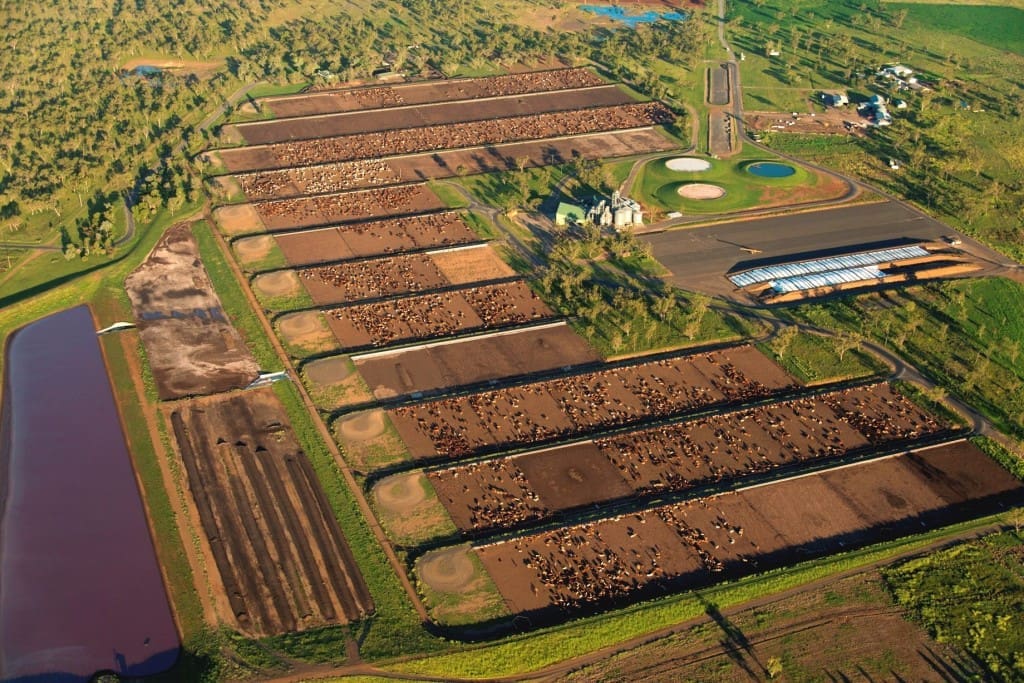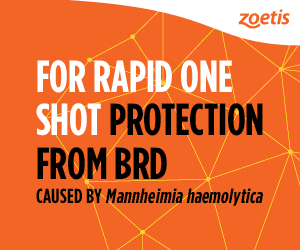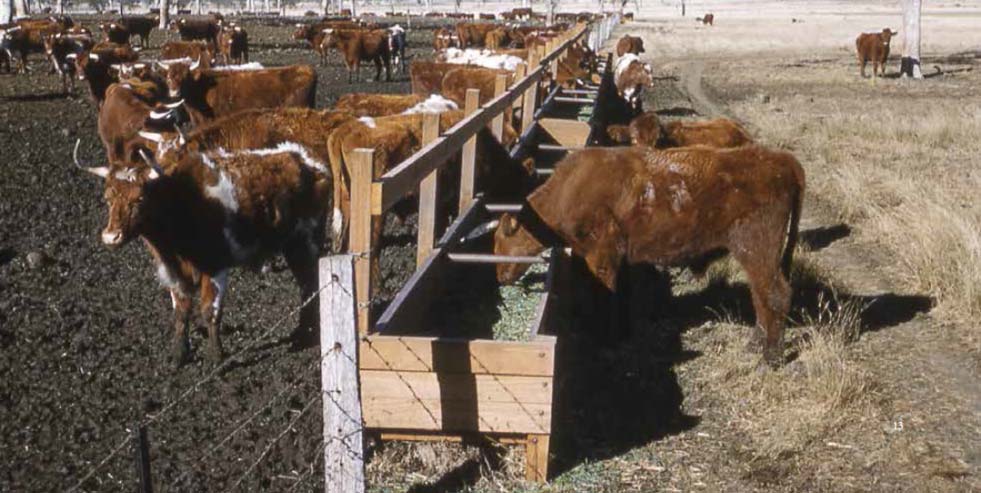Locations (1): Wainui feedlot, Bowenville QLD
One time capacity: 14,145 SCU, currently feeding 18,268 head
2022 cattle turnoff: 58,000 head
2015 Top 25 position: 14 2003 position 19 (7200 head).
 The North Australian Pastoral Co’s Wainui feedlot on Queensland’s Darling Downs is part of a vertically integrated grainfed beef business, with 90 percent of feeder cattle being sourced out of the company’s own vast breeding and backgrounding properties further north.
The North Australian Pastoral Co’s Wainui feedlot on Queensland’s Darling Downs is part of a vertically integrated grainfed beef business, with 90 percent of feeder cattle being sourced out of the company’s own vast breeding and backgrounding properties further north.
At the time this item was compiled, the yard had 18,268 feeders on its inventory.
About half of the yard’s capacity is made up of 100-day type cattle, producing +350kg grainfed carcases sold to JBS, together with about 25pc of cattle fed for around 120 days for NAPCo’s own Five Founders branded beef program (details below). The remainder are yearling steers and heifers fed for a 70-day Woolworths supermarket contract (20pc), and a small ‘midfed’ program for supermarket use (5pc).
In essence, the type of cattle fed and market segments has changed little over the past decade.
A small portion of the yard used to be devoted to custom feeding, but that service was wound-up some years back.
The company’s Five Founders program, based on NAPCo’s Kynuna and Alexandria composites (details below) typically sees 60-70pc of carcases producing a marbling score 2+.
NAPCo was yet to launch its own branded beef program when this feature was last compiled in 2015. Five Founders was launched in 2019 with 3000 head, but the program has grown substantially, expecting to account for 15,000 head in 2023.
The yard’s operating capacity has not changed since our previous 2015 report (14,500SCU), however the opportunity exists for some expansion and NAPCo is currently considering its options.
That would involve submitting a formal Development Application, but would be dictated, to some extent, by possible herd size changes within NAPCo’s northern breeding operations, Beef Central was told.

NAPCo’s Wainui feedlot
In general terms, NAPCo prefers not to sell finished cattle off grass out of the paddock, instead building its production model around grain finishing all appropriate steers and surplus heifers through Wainui. The company’s 190,000 head cattle herd produces around 60,000 calves per year, used either as feeders or breeder replacements.
Calves are bred either on NAPCo’s Barkly properties like Alexandria and Mittiebah, or Gulf properties like Boomarrra and Coolullah, before either being sent for a growing period on the company’s four Channel Country properties, or the Central Queensland backgrounding buffel grass properties Cungelella, Goldsborough and Mantuan Downs, before arriving at the feedlot.
 Small numbers of bought cattle are procured to maintain Wainui at capacity, or to fulfil domestic supply contracts.
Small numbers of bought cattle are procured to maintain Wainui at capacity, or to fulfil domestic supply contracts.
NAPCo was the first of Australia’s large pastoral companies to embrace composite breeding – a somewhat controversial move when it started in the late 1980s. All other large northern operators at the time were either straight Brahman or Santa cattle.
The company’s Kynuna and Alexandria composites have stood the test of time, providing a strong balance between fertility, adaptation and meat quality. Wainui’s yearling cattle presented for MSA grading produce an average MSA index score of around 60 – significantly better than the average for all non-implanted Queensland grainfed yearlings last year.
Consistency
One of the ‘luxuries’ enjoyed by NAPCo’s Wainui yard is consistency of performance.
All the cattle fed come with very similar genetic make-up; they are drafted into very large, even lines and weights before induction; and they are not co-mingled with strangers from numerous different herds. It means the feedlot enjoys excellent respiratory performance, and very low pull rates, by industry standards.
At the meat end, carcases are remarkably consistent in weight, finish and marbling performance, and this has become a hallmark of the company’s Five Founders brand program.
NAPCo has its Five Founders service kill carried out at Northern Cooperative Meat Co, Casino.
Methane inhibition
Given the recent broader community interest in the beef industry’s environmental footprint, perhaps one of the more significant developments at Wainui has been the commencement early this year of a program using the methane-reducing feed additive, Bovaer as a ration inclusion – suppressing the enzyme that triggers methane production in an animal’s stomach, and reducing methane production by up to 90% with no impact on daily gain and feed conversion ratios.
NAPCo’s Five Founders brand program is Australia’s first certified carbon-neutral beef brand. Buying offsets was the first part of that process, but it is increasingly being replaced by insetting through projects like the introduction of Bovaer.
The longer term aim is to become net zero for carbon.
Feedlot manager Jeremy Sloss has worked his way through the ranks at Wainui, originally in the feed milling team and as feedmill manager. He was appointed feedlot manager six months ago. Jeremy fits the general trend we are seeing in this feature in remarkably young age among yard managers, being just 32 years old.
Long history
Lotfeeding at Wainui can be traced back to the earliest origins of the feedlot industry in Australia.
As this image shows, the yard was feeding cattle as early as 1957, using crude sawn timber bunks, and feeding speary-horned Shorthorn bullocks out of former owner, Australian Estates’ (later CSR’s) extensive northern breeding properties. Read more about Wainui’s early history in ALFA’s feedlot history book, “Grainfed: The history of the Australian Lotfeeding industry.”

NAPCo’s purchase of Wainui in 1985 was primary as a drought mitigation tool, but it wasn’t long before the value of providing a reliable finishing system to add weight and consistent quality to cattle year-round became apparent. By about 1991, the feedlot was fully-integrated into the company’s supply chain model.
Since then, Wainui has been developed into one of Australia’s most modern and efficient feedlots.
Recent investments in infrastructure at the yard include shade provision, with 100 percent of pens now provided with shade.
The yard grew from its initial size of 3500 head to 7200 head in 1996. In 2012, the site underwent another major expansion and redevelopment, doubling in capacity again from 7200 to 14,240 SCU.
Steamflaking/milling capacity was doubled at the same time, with the installation of two large R&R mills, and associated milling and commodity infrastructure. On a white grains basis, Wainui’s current milling capacity is well above the yard’s current built capacity for cattle.
The Wainui aggregation includes a 5000ha dryland and irrigated farming enterprise surrounding the feedlot, contributing to grain, silage and hay requirements.
Click here to return to Top 25 Lotfeeders table.
Click here to access all Top 25 Lotfeeders articles, as they appear in coming weeks
Feature proudly presented by Zoetis Australia and its products, BOVI-SHIELD MH-ONE, RHINOGARD and SYNOVEX
Monday: No 23, Wambo feedlot




HAVE YOUR SAY